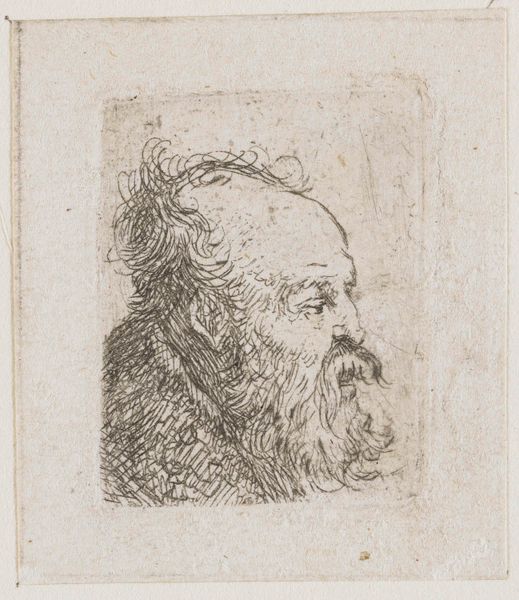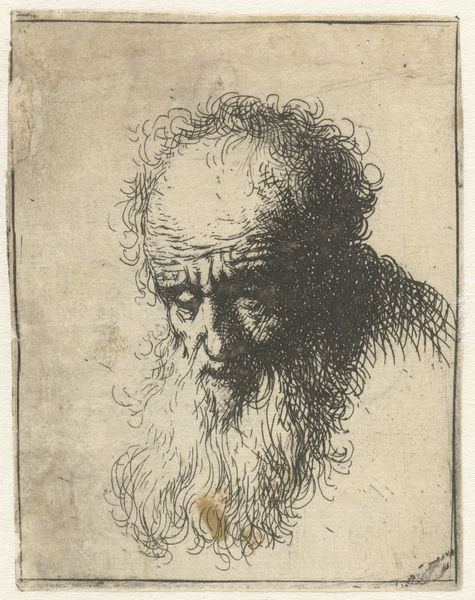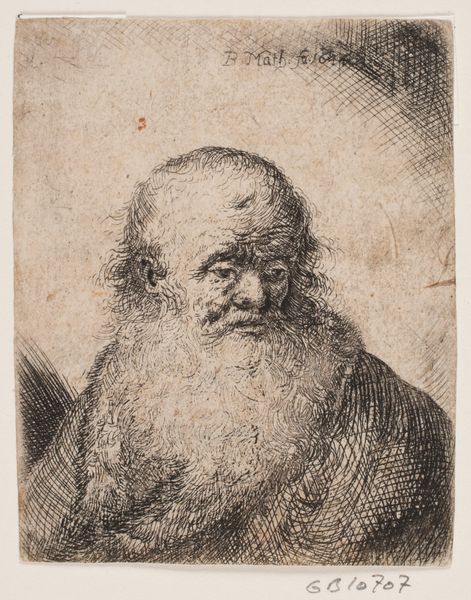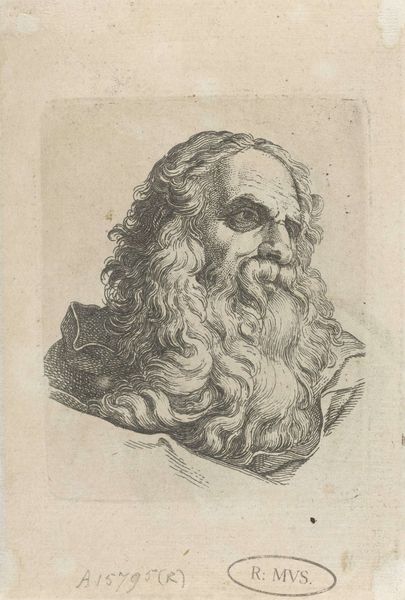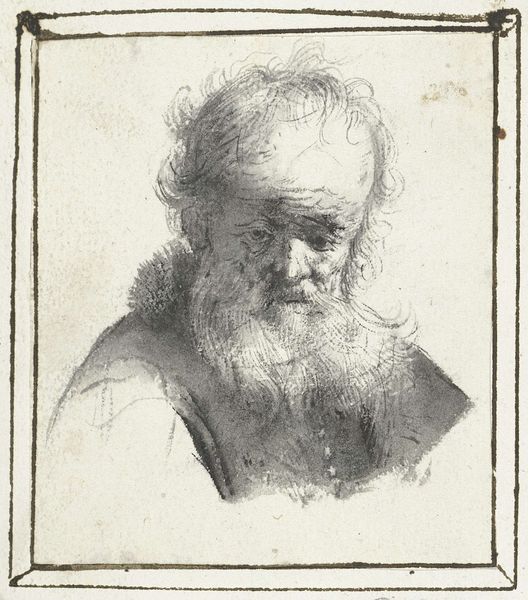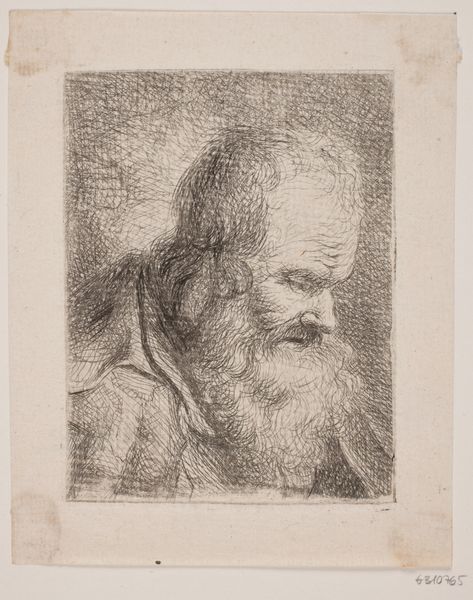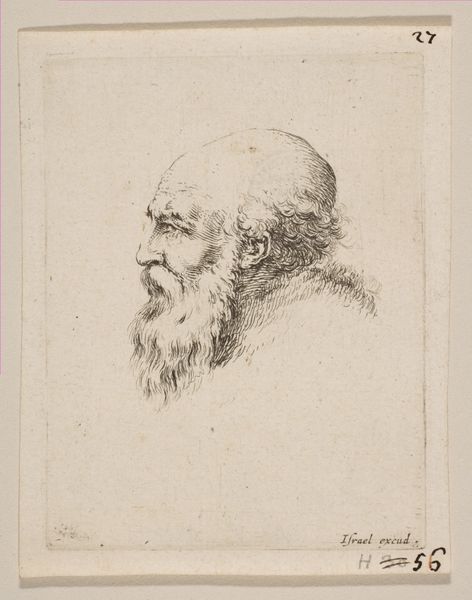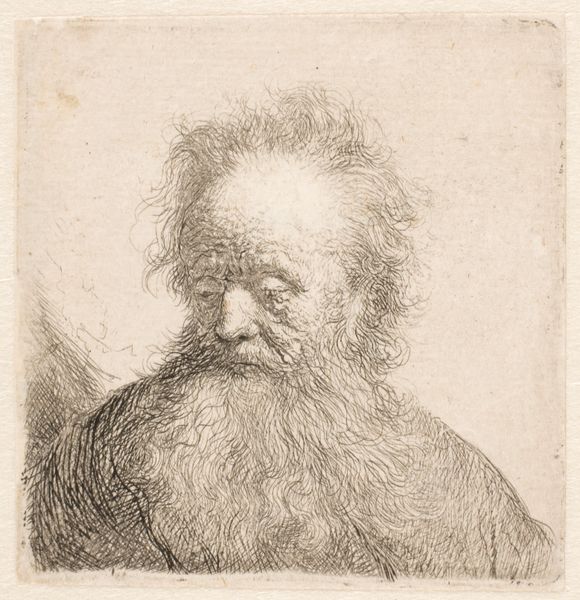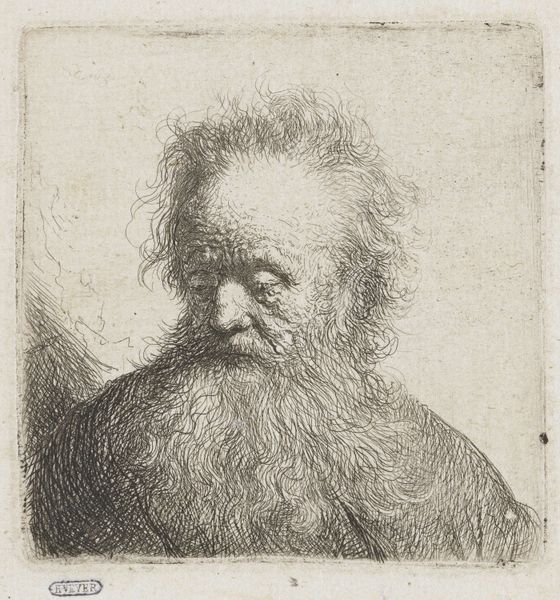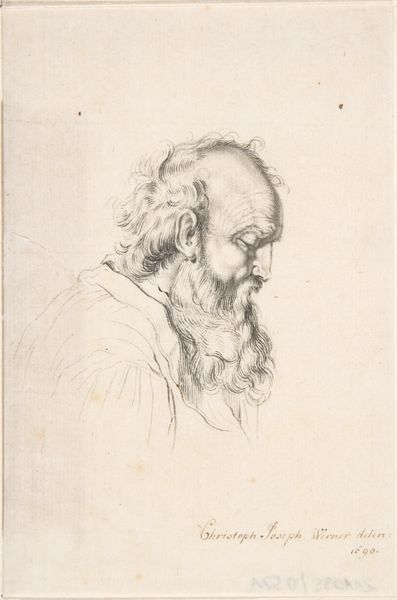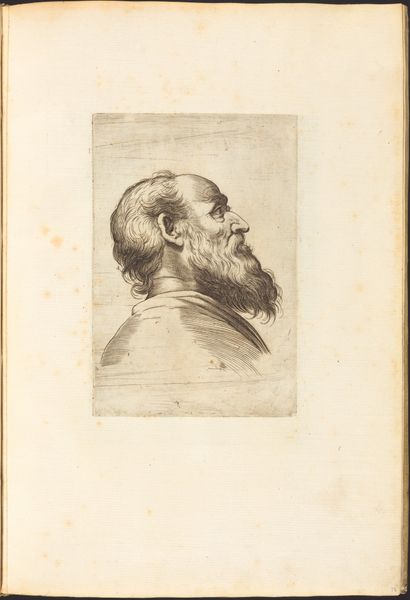
drawing, etching, paper, ink
#
portrait
#
pencil drawn
#
drawing
#
toned paper
#
baroque
#
dutch-golden-age
#
etching
#
pencil sketch
#
charcoal drawing
#
paper
#
ink
#
pencil drawing
Dimensions: height 36 mm, width 28 mm
Copyright: Rijks Museum: Open Domain
Editor: Here we have Rembrandt van Rijn's "Old Bearded Man, with Mouth Half Open," from around 1629, rendered in etching and ink on paper. It's such a quick, raw sketch – almost haunting in its directness. What stands out to you? Curator: What grabs me is how Rembrandt uses the figure of the "old man" – a recurring motif for him – as a space to explore themes of aging, wisdom, and, crucially, social vulnerability. Look at the etched lines; they aren’t just descriptive, are they? They speak to the precariousness of old age within a rapidly changing Dutch society, don't you think? A society that often marginalized those who couldn't contribute economically. How might his open mouth also be seen as symbolic of powerlessness, of being silenced? Editor: That’s a compelling idea. I was initially focused on the sort of immediacy of the technique but thinking about the social commentary is a new perspective. Curator: It’s essential to situate Rembrandt within his time. The Dutch Golden Age was, yes, a period of immense prosperity but also fraught with social inequalities. His interest in portraying elderly individuals, often those on the fringes, serves as a form of visual activism, drawing attention to overlooked experiences. The use of chiaroscuro is not merely aesthetic, right? It actively obscures parts of his face. Doesn't that create a metaphor for societal invisibility? Editor: It does. So, the roughness isn’t just a feature of the medium, but it’s contributing to the message, as well? Curator: Precisely. The art historical meets social observation. Consider how portraiture usually idealizes the subject, particularly wealthy patrons. Editor: Right! He's subverting those conventions. Curator: Exactly. It challenges us to reconsider who and what we value seeing. And what it means to see in art. Editor: Wow, I never thought of it that way before, I really learned a lot today. Curator: Absolutely! It’s a reminder of how artistic choices, even seemingly simple ones, can carry profound social and political weight, and of our own complicity in its continuing influence.
Comments
rijksmuseum about 2 years ago
⋮
Another five small depictions of men’s heads, but this time it is certain that they did not originate as independent prints. Originally, they were all on the same copperplate. After Rembrandt cut up the plate, he completed each print individually. This working method was unusual and characterizes Rembrandt as an artist who often strayed off the beaten path.
Join the conversation
Join millions of artists and users on Artera today and experience the ultimate creative platform.
